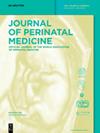The potential impact of universal screening for vasa previa in the prevention of stillbirths
IF 1.4
4区 医学
Q3 OBSTETRICS & GYNECOLOGY
引用次数: 0
Abstract
Objectives To estimate the number of pregnancies complicated by vasa previa annually in nine developed countries, and the potential preventable stillbirths associated with undiagnosed cases. We also assessed the potential impact of universal screening for vasa previa on reducing stillbirth rates. Methods We utilized nationally-reported birth and stillbirth data from public databases in the United States, United Kingdom, Canada, Germany, Ireland, Greece, Sweden, Portugal, and Australia. Using the annual number of births and the number and rate of stillbirths in each country, and the published incidence of vasa previa and stillbirth rates associated with the condition, we estimated the expected annual number of cases of vasa previa, those that would result in a livebirth, and the potential preventable stillbirths with and without prenatal diagnosis. Results There were 6,099,118 total annual births with 32,550 stillbirths, corresponding to a summary stillbirth rate of 5.34 per 1,000 pregnancies. The total expected vasa previa cases was estimated to be 5,007 (95 % CI: 3,208–7,201). The estimated number of livebirths would be 4,937 (95 % CI: 3,163–7,100) and 3,610 (95 % CI: 2,313–5,192) in pregnancies with and without a prenatal diagnosis of VP. This implies that prenatal diagnosis would potentially prevent 1,327 (95 % CI: 850–1,908) stillbirths in these countries, corresponding to a potential reduction in stillbirth rate by 4.72 % (95 % CI: 3.80–5.74) if routine screening for vasa previa was performed. Conclusions Our study highlights the importance of universal screening for vasa previa and suggests that prenatal diagnosis of prevention could potentially reduce 4–5 % of stillbirths.普遍筛查前置胎盘对预防死胎的潜在影响
目的 估计九个发达国家每年因前置胎盘而并发症的妊娠数量,以及与未确诊病例相关的潜在可预防死产数量。我们还评估了普及前置胎盘筛查对降低死胎率的潜在影响。方法 我们利用了美国、英国、加拿大、德国、爱尔兰、希腊、瑞典、葡萄牙和澳大利亚公共数据库中的全国性出生和死产数据。利用每个国家的年出生人数、死胎数和死胎率,以及已公布的前置胎盘的发病率和死胎率,我们估算了每年预计发生的前置胎盘病例数、可导致活产的病例数,以及进行和不进行产前诊断的潜在可预防死胎数。结果 每年共有 6,099,118 例新生儿,其中 32,550 例死胎,死胎率为 5.34‰。预计前置胎盘病例总数为 5,007 例(95 % CI:3,208-7,201)。在产前诊断出 VP 和未产前诊断出 VP 的孕妇中,估计活产数分别为 4,937 例(95 % CI:3,163-7,100 例)和 3,610 例(95 % CI:2,313-5,192 例)。这意味着,在这些国家,产前诊断将有可能防止 1,327 例(95 % CI:850-1,908 例)死胎的发生,如果常规筛查前置胎盘,死胎率将有可能降低 4.72 %(95 % CI:3.80-5.74)。结论 我们的研究强调了普遍筛查前置胎盘的重要性,并表明产前诊断预防可能会减少 4%-5% 的死胎率。
本文章由计算机程序翻译,如有差异,请以英文原文为准。
求助全文
约1分钟内获得全文
求助全文
来源期刊

Journal of Perinatal Medicine
医学-妇产科学
CiteScore
4.40
自引率
8.30%
发文量
183
审稿时长
4-8 weeks
期刊介绍:
The Journal of Perinatal Medicine (JPM) is a truly international forum covering the entire field of perinatal medicine. It is an essential news source for all those obstetricians, neonatologists, perinatologists and allied health professionals who wish to keep abreast of progress in perinatal and related research. Ahead-of-print publishing ensures fastest possible knowledge transfer. The Journal provides statements on themes of topical interest as well as information and different views on controversial topics. It also informs about the academic, organisational and political aims and objectives of the World Association of Perinatal Medicine.
 求助内容:
求助内容: 应助结果提醒方式:
应助结果提醒方式:


